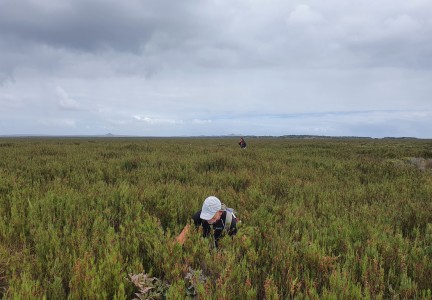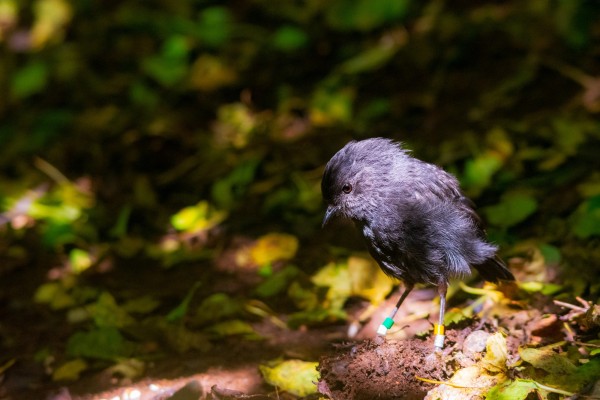
History
The Chatham Islands have a history of restoration pioneering and conservation success.
Three species have been brought back from the brink of extinction, with the involvement of both islanders and organisations. One species is the parea, a wood pigeon much like the kererū on mainland Aotearoa, whose population has risen from around 40 birds to around 600.
The tāiko is a medium-sized seabird, part of the petrel family, and is said to still be the world's rarest seabird. It was thought to be extinct until its rediscovery in 1978. The species is being carefully monitored and protected on the south of main Chatham, with 50 known breeding pairs returning to their burrows in the 2023/24 season.

Black robin on Mangere c. Enzo Reyes
Perhaps the most famous conservation story is that of the black robin, also known as the karure or kakaruia. The black robin population was reduced to just five birds in 1979, with only one single fertile female known as Old Blue. Today there are around 250 adults.
Nature reserve islands
Our nature reserve islands, Mangere/Maung'Re and Rangatira/Hokorereoro, are predator-free bird sanctuaries. Like an ark of Chathams species, they're home to a range of precious plant, bird and invertebrates. At the moment, some of these species only exist on these tiny islands.
The reserves were set aside thanks to the foresight of some of the islands' elders and ancestors with support from the government. Although the habitat on is still regenerating, the islands give us a sense of how the Chathams would have been - and of what we could have again, literally in our backyards.
The nature reserves have the potential to be used like nurseries to re-populate Rēkohu/Wharekauri and Pitt in the future. The islands are also close enough that birds do travel between them, meaning that, with the right habitat and protection, some birds could return to our main islands (especially Pitt) and start establishing of their own accord.
Strict biosecurity plays a huge part in protecting these islands from pests and predators. For this reason, visitation is currently restricted, although there are some opportunities for organised and carefully managed visits. The islands are currently managed by the Department of Conservation.
Local conservation
The islands' community has been involved in restoration for generations. The two populated islands have the highest proportion of covenants and kawenata per capita in New Zealand. The three schools are invested in the local environment, and many in the community are involved in predator control, plantings, and restoration.
This sets up a strong foundation for the Chatham Islands to face the conservation challenges ahead.

